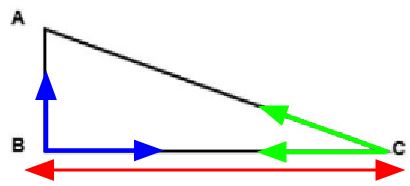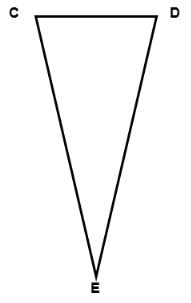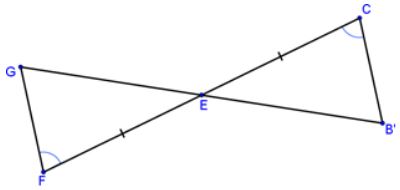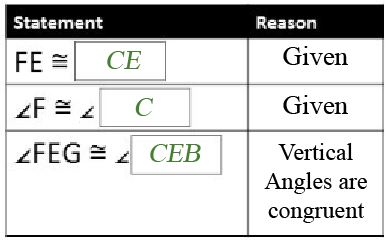Proving Triangles Congruent
So far, you have learned to prove triangles are congruent using the SSS and SAS postulates. You will learn two more methods now.
Included Sides
Before we learn these methods, you need to learn a new concept. The concept is called included side.
An included side is the side of a triangle that is between two angles. In other words, the included side has to be touching both angles.
The included side of angles B and C is side BC becaus BC touches both angles B and C.
Let's see if you can pick out the included side between the angles given.
Name the included side between the given angles.
∠C and ∠D: ___
∠E and ∠D: ___
∠E and ∠C: ___
ASA Theorem
Great job, now you can move on to the new theorem.
The ASA Theorem states that if two angles and the included side of one triangle are congruent to two angles and the included side of another triangle, then the triangles are congruent.
The order of the letters ASA angle, side, angle helps you to remember that side has to be between the two angles.
Example: ASA Theorem
List the corresponding congruent parts of the triangles. Is this enough information to prove the triangles congruent? If so, write the congruence statement and the method used to prove they are congruent.
Solution: First we will list all given corresponding congruent parts.
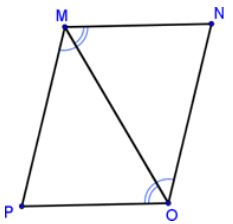
Now we have enough information to state the triangles are congruent. Since MO and OM are the corresponding included sides, △PMO ≅ △NOM by ASA Theorem.
Your Turn
List the corresponding congruent parts of the triangles. Is this enough information to prove the triangles congruent? If so, write the congruence statement and the method used to prove they are congruent.
Yes, △GFE ≅ △ ____ by ____ Theorem.
Answer: △BCE by ASA Theorem
AAS Theorem
Here is the last theorem you will need to learn about proving two triangles are congruent.
The AAS Theorem states that if two angles and a nonincluded side of one triangle is congruent to two angles and a nonincluded side of another triangle, then the triangles are congruent.
The order of the letters AAS angle, angle, side helps you to remember that side is not between the two angles.
Example: AAA Theorem
List the corresponding congruent parts of the triangles. Is this enough information to prove the triangles congruent? If so, write the congruence statement and the method used to prove they are congruent.
Solution: First we will list all given corresponding congruent parts.
We have enough information to state the triangles are congruent. Since AC and EC are the corresponding nonincluded sides, △ABC ≅ △ ____ by ____ Theorem.
Answer: △EDC by AAS Theorem
Video
If you would like to see a video of someone explaining these concepts along with solving problems go to Brightstorm: ASA and AAS.
